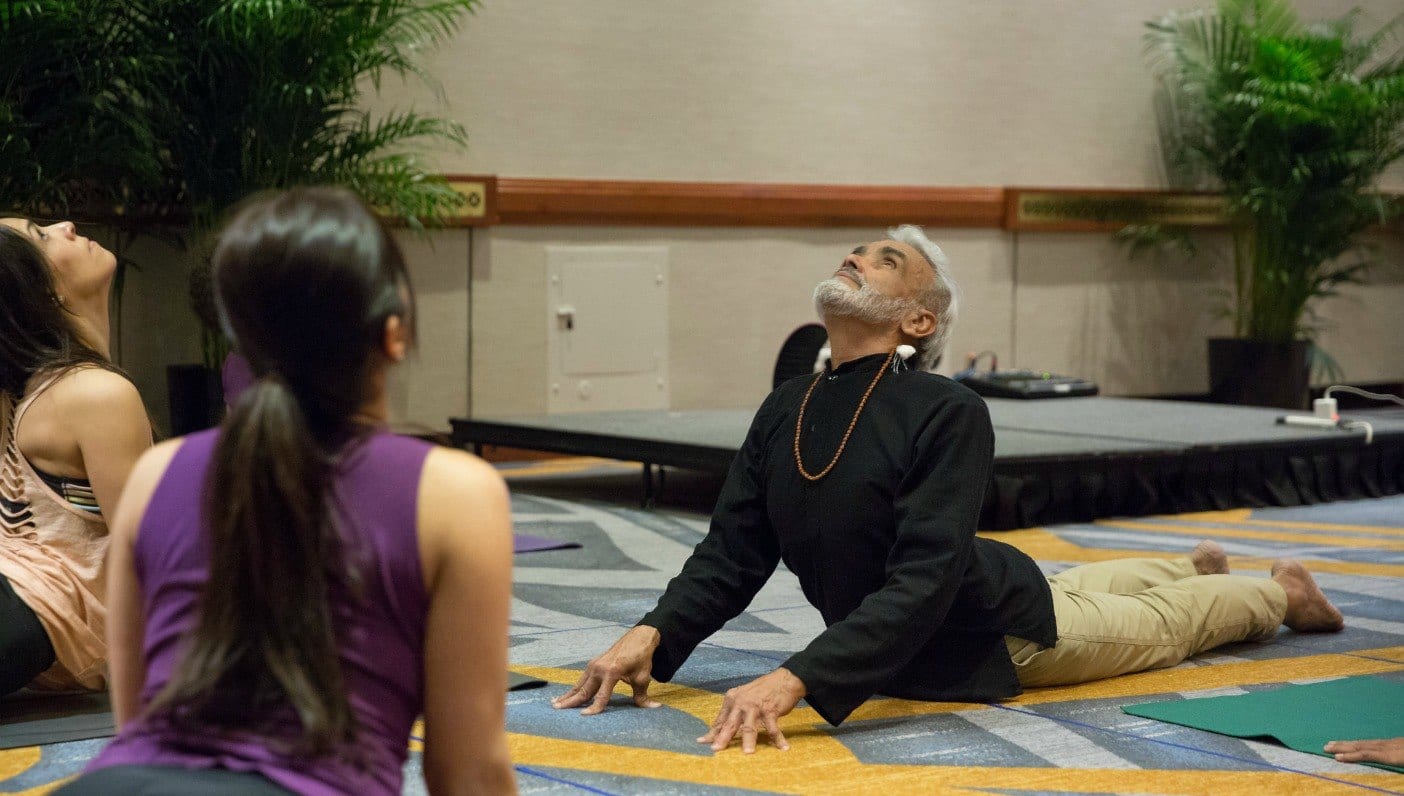
For more inspiring videos to ignite the spirit, visit the Wanderlust Speakeasy on Wanderlust TV.
At the end of a sweaty, deep flowing yoga class, anything longer than a five-minute savasana could easily send you off to dreamland. It seems natural to fall asleep when the eyes are closed and the body is so relaxed. Can you imagine an hour of corpse pose, where the goal is to keep your mind switched on? For a lot of us, it may seem impossible but Yoga Nidra, or Psychic Sleep, is a widely practiced method of deep relaxation and meditation.
World-renowned yoga teacher and Wanderlust mentor Dharma Mittra is known for his worldwide Dharma yoga studios and ancient knowledge on how to physically and mentally radiate health. Dharma Mittra teaches Yoga Nidra as a way to recharge and rejuvenate by redirecting focus away from body consciousness in order to establish a relationship with inner peace with The Self.
In 2015, Dharma Mittra graced the Speakeasy stage at Wanderlust Tremblant. For more Wanderlust festival and Speakeasy opportunities, check out our summer lineup.
We had the opportunity to attend Dharma Mittra’s workshop on Yoga Nidra at Yoga Journal LIVE! in New York this April. Whether you are looking to practice Yoga Nidra on your own, or lead a Yoga Nidra experience, there are several different tools that Dharma Mittra encourages students to utilize in both teaching and self-practice.
Start with Pranayama to Clear the Mind
Yoga Nidra is not just about finding a comfortable position on the mat and slipping into a blissful state of meditation. It is important to set yourself up for success. Dharma Mittra spends the first hour of the session leading the class through various pranayama exercises, specifically, Nadi Shodana, or alternate-nostril breathing. Nadi Shodana is practiced to clear the mind and direct focus to the present moment. Breathing with intention through each of the nostrils clears out any mental distractions by balancing the right and left hemispheres of the brain.

Use Pillows, Props, and Blankets
The various props used in yoga allow us to achieve better alignment, find balance, and rekindle connection. Many teachers, including Dharma Mittra, encourage placing a pillow underneath the knees so that the legs can rest long and comfortable. Lying in stillness will cause the body to lose heat, so be sure to wear warm clothes and drape a blanket over the body.
Set An Intention to Remain Awake
Immediately after closing the eyes and settling into stillness, Dharma Mittra opens the practice with a simple request, “Mentally repeat three times to yourself, ‘I will remain awake during the instruction.’”
It’s important to make a commitment to the practice and acknowledge that the purpose of the Yoga Nidra is not to drift into restful sleep, but instead gain the benefits of sleep while keeping the mind wide awake and calm. Make a promise to yourself to remain present during the experience.

Relax the Body—One Part at a Time
Instructions for Yoga Nidra should come very clearly and specifically from the teacher, relying heavily on demonstrating the poses for maximum engagement. One method is to focus on relaxing different sections of the body one at a time, beginning with the left thumb and ending at the left pinky toe before moving on to the right side. Bring attention to the upper body last, working from the shoulders all the way to each of the facial muscles. Relaxing the body encourages grounding and dropping the dead weight of the body into the mat.
Be Patient, Practice, and Reap the Benefits
Once the mental workout is complete, then it’s time to experience true relaxation. The whole purpose of Yoga Nidra is to be aware of the present moment—it may sound simple but we spend a lot of our time mindlessly floating through the day. It may be the only time that you actually feel the weight of your body sink into the mat as it remains relaxed. This feeling of deep relaxation and moving away from body consciousness takes you one step closer to cultivating inner peace.
Consistent practice with Yoga Nidra will help you regain the energy that is depleted throughout the day. Start with intention and give yourself plenty of time to settle in. After several practices, you will feel recharged and rejuvenated.
Are you looking for a physical and mental recharge? Check out the Wanderlust 108 and our summer festivals for a handful of unique yoga opportunities.

